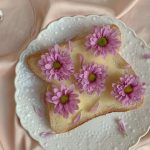Decorative elements play a crucial role in elevating the aesthetics of cakes, turning them into visual delights. One popular choice for embellishment is decorative leaves, which add a touch of elegance and sophistication to any cake.
In this article, we will delve into the art of creating these stunning adornments with fondant, a versatile sugar paste that can be molded into various shapes and designs. Learn how to make decorative leaves for cakes to take your baking skills to the next level.
Adding decorative leaves to cakes not only enhances their visual appeal but also provides a unique personalized touch. By customizing the colors, sizes, and textures of these fondant leaves, you can complement any cake’s theme or style effortlessly. Whether you are preparing a birthday cake, wedding cake, or any special occasion treat, mastering the art of creating decorative leaves will undoubtedly set your creations apart and wow your guests.
With just a few simple supplies like fondant, food coloring, leaf-shaped cutters, and a bit of creativity, you can bring your cakes to life with beautifully crafted leaves. This article will guide you through every step of the process – from preparing the fondant and creating leaf templates to cutting out precise shapes and adding realistic textures. Follow along as we explore techniques for drying and shaping the leaves before decorating your cakes with these exquisite handmade embellishments.
Supplies Needed
To create decorative leaves for cakes, you will need a few essential supplies to get started. Here is a list of materials and tools required to make stunning fondant leaves that will elevate the appearance of your cakes:
- Fondant: The base material for creating decorative leaves, fondant is a pliable icing that can be easily shaped and molded.
- Food coloring: Various shades of green food coloring to color the fondant and create lifelike leaves.
- Leaf-shaped cutters: Different sizes and shapes of leaf cutters to cut out precise and uniform leaves from the fondant.
- Rolling pin: A rolling pin to roll out the fondant evenly before cutting out the leaves.
- Cornstarch or powdered sugar: To prevent sticking while rolling out the fondant.
Once you have gathered all the necessary supplies, you can begin preparing the fondant for making decorative leaves. It is crucial to color, roll, and shape the fondant correctly to achieve realistic-looking leaves that will enhance your cake’s aesthetic appeal.
Preparing the Fondant
- Start by kneading the fondant until it becomes soft and pliable.
- Add a small amount of green food coloring onto the fondant and knead it until you achieve your desired shade of green.
- Dust your work surface with cornstarch or powdered sugar to prevent sticking, then roll out the colored fondant evenly with a rolling pin.
Following these steps will ensure that your fondant is ready for cutting out beautiful decorative leaves for your cakes. Whether you are a beginner or experienced baker, mastering this process will allow you to create visually stunning desserts that will impress your friends and family.
Preparing the Fondant
Decorative leaves are a beautiful and versatile addition to any cake, bringing a touch of nature and elegance to your baked creations. By learning how to make decorative leaves for cakes, you can elevate the overall look of your desserts and impress your guests with your attention to detail. One of the key components in creating these stunning edible decorations is preparing the fondant properly.
To start, you will need a few essential supplies for making fondant leaves, including fondant in various colors, food coloring gel or powder, leaf-shaped cutters, a rolling pin, cornstarch or powdered sugar for dusting, and a small paintbrush for detailing. When choosing fondant for making leaves, it’s important to work with a pliable consistency that is easy to shape and manipulate.
If your fondant is too stiff, you can knead in a small amount of shortening or glycerin to soften it up.
Coloring your fondant is the next step in preparing decorative leaves for cakes. To achieve vibrant hues for your foliage, use food coloring gel or powder instead of liquid food coloring which can make the fondant too sticky. Start by adding a small amount of color at a time and knead it into the fondant until you reach your desired shade.
Remember that fondant tends to darken slightly as it dries, so aim for a slightly lighter color than what you want the final product to be. Once colored, roll out the fondant on a clean surface dusted with cornstarch or powdered sugar to prevent sticking and tearing.
Creating Leaf Templates
To begin the process of making decorative leaves for cakes, creating leaf templates is a crucial step to ensure uniformity in shape and size. By having templates handy, you can easily trace and cut out perfect leaf shapes from fondant or gum paste, adding a professional touch to your cake decorations. Here is a guide on how to create templates for different leaf shapes and sizes:
- Choose the desired leaf shapes: Select various types of leaves that you want to use as templates for your decorative elements. Common choices include oak leaves, maple leaves, and ivy leaves.
- Draw the leaf shapes: Using a pencil and paper, sketch out the outline of each leaf shape onto the paper. Make sure to include details like the stem and veins for a more realistic look.
- Transfer the designs onto sturdier material: Once you are satisfied with your leaf drawings, transfer them onto cardstock or cardboard. This will serve as your durable template for cutting out fondant leaves.
By following these steps, you can create customized leaf templates that cater to the specific design of your cakes. Having a variety of leaf shapes at hand will allow you to experiment with different arrangements and patterns when decorating your cakes.
- Store templates carefully: To ensure longevity and reusability, store your leaf templates in a safe place where they won’t get bent or damaged. Consider investing in plastic sleeves or a folder specifically for storing your handmade templates.
- Adjust sizes as needed: Depending on the size of your cake or the overall design aesthetic you are going for, feel free to adjust the sizes of your leaf templates accordingly. You can enlarge or reduce them by using a photocopier or manually resizing them on paper before transferring them to sturdier material.
- Personalize with unique details: While creating your leaf templates, don’t be afraid to add unique details or variations to make them stand out. Adding serrated edges, changing up vein patterns, or incorporating different textures can add depth and visual interest to your decorative leaves.
With well-crafted leaf templates at your disposal, you’ll be equipped to tackle the next steps in creating stunning decorative leaves for cakes that will impress anyone who lays eyes on them. Experiment with different shapes and sizes to elevate your cake decorating skills and bring an extra element of artistry to your baked creations.
Cutting Out the Leaves
Choosing the Right Leaf-Shaped Cutters
When it comes to cutting out decorative leaves for cakes, selecting the right leaf-shaped cutters is essential. These cutters come in various sizes and designs, allowing you to create a variety of leaf shapes for different cake decorating purposes.
Make sure to choose cutters that are sharp and have a clean edge to ensure precise cuts on the fondant. You can find leaf-shaped cutters at specialty baking stores or online, where there is a wide range of options to choose from.
Cutting Out the Fondant Leaves
To begin cutting out the fondant leaves, roll out your colored fondant evenly on a clean surface. Dusting some cornstarch on the surface can prevent the fondant from sticking. Place the leaf-shaped cutter onto the rolled-out fondant and press it firmly to create a clean cut. Carefully lift the cutter off the fondant to reveal the leaf shape. Repeat this process until you have enough leaves for your cake decoration.
Ensuring Precision and Neatness
To ensure precision and neatness in cutting out the leaves, it’s important to handle the fondant with care and attention to detail. Make sure that your cuts are clean and without jagged edges by using a sharp cutter and applying even pressure. If needed, use a small offset spatula or knife to gently detach any excess fondant around the edges of the cut leaf shape.
Taking your time during this step will help you achieve perfectly shaped leaves for your cake decoration. With these tips in mind, you can confidently create beautiful and precise decorative leaves for your cakes that will surely impress anyone who sees them.
Adding Texture and Veins
Imprinting Texture
One of the easiest ways to add texture to fondant leaves is by using textured mats or tools. Simply press the textured mat onto the rolled-out fondant before cutting out the leaf shapes. This will create a raised pattern on the surface of the leaves, mimicking the appearance of veins and adding depth to your decorations.
Veining
For a more realistic look, you can create veining on the fondant leaves using a veining tool or even a toothpick. Gently press the tool along the center of each leaf shape, creating thin lines that resemble natural veins. You can vary the pressure and direction of your strokes to achieve different vein patterns, adding a touch of authenticity to your decorative leaves.
Dusting With Edible Powder
Another technique for adding texture and depth to fondant leaves is by dusting them with edible powder or petal dust. This can be done after cutting out the leaves and shaping them, giving them a subtle sheen and enhancing their color variations.
Use a small brush to apply the powder lightly onto the surface of the leaves, focusing on areas where shadows would naturally fall for a more lifelike finish. Incorporating these techniques into your process will take your decorative leaf creations to the next level and make them stand out as beautiful additions to any cake design.
Drying and Shaping
After cutting out the fondant leaves for your cake decorations, the next crucial step is to properly dry and shape them to ensure they look realistic and dimensional. This process is essential to prevent any distortion or damage to the delicate fondant leaves before placing them on your cakes. Here are some tips on how to effectively dry and shape your decorative leaves for cakes:
Firstly, carefully transfer the cut-out fondant leaves onto a clean drying rack or parchment paper-lined baking sheet. It is important to place them in a well-ventilated area away from direct sunlight or heat sources to allow for proper drying without any unwanted changes in color or texture. The ideal drying time can vary depending on the thickness of your fondant leaves, but it typically ranges from 24 to 48 hours.
As the fondant leaves begin to dry, you can gently shape them into different positions and curves to give them a more realistic appearance. Use tools like foam shaping pads, small paintbrushes, or even toothpicks to create veins and subtle details on the leaves. This step adds depth and dimension to the fondant leaves, making them look more lifelike when placed on your cakes.
Additionally, if you want to enhance the sheen and overall appearance of your dried fondant leaves, you can lightly brush them with edible luster dust or petal dust in complementary colors. This simple technique will elevate the look of your decorative leaves and make them stand out beautifully against the backdrop of your cake design.
Remember to handle the dried fondant leaves with care when attaching them to your cakes to maintain their shape and structure for a stunning final presentation.
Decorating With Decorative Leaves
When it comes to decorating cakes with handmade fondant leaves, there are various creative ideas that you can explore. One popular way is to create a cascading effect by placing the leaves in a natural flow down the side of the cake.
This not only adds dimension to the design but also creates a visually striking effect that draws attention to the details of the leaves. Another idea is to arrange the leaves in clusters or patterns on top of the cake, creating a cohesive and harmonious look that ties into the overall theme or color scheme.
Color coordination plays a crucial role in decorating cakes with fondant leaves. Whether you choose to mimic real leaf colors with shades of green and brown or opt for a more whimsical and vibrant approach with bold hues, it’s essential to consider how the colors will complement each other and enhance the visual impact of the design.
By experimenting with different color combinations and arrangements, you can create unique and eye-catching cake decorations that are sure to impress both yourself and your guests.
| Supplies Needed | Materials |
|---|---|
| Fondant | Food coloring |
| Leaf-shaped cutters | Rolling pin |
| Paring knife or small scissors | Cornstarch or powdered sugar (for dusting) |
Conclusion
In conclusion, decorative leaves play a crucial role in elevating the visual appeal of cakes, adding a touch of nature and sophistication to any design. By following the step-by-step guide outlined in this article, readers can easily create their own stunning fondant leaves to adorn their cakes with. The process may seem daunting at first, but with the right supplies and techniques, anyone can master the art of making decorative leaves for cakes.
By gathering all the necessary supplies and meticulously preparing the fondant, individuals can ensure that their decorative leaves turn out beautifully. Creating leaf templates and using cutters to achieve precise shapes will help in achieving a professional-looking finish. Adding texture and veins to the leaves will bring them to life, making them look natural and realistic.
Whether it’s for a special occasion or simply for fun, decorating cakes with handmade fondant leaves can be a rewarding experience. Experimenting with different colors, arrangements, and designs will allow bakers to unleash their creativity and personalize their creations. So why not give it a try? With patience and practice, anyone can master the art of creating decorative leaves for cakes and take their baking skills to new heights.
Frequently Asked Questions
How Do You Make Fake Edible Leaves?
Fake edible leaves can be made using fondant or gum paste, which are both pliable materials that can be shaped and molded into leaf shapes. These fake leaves can be colored with edible food coloring to achieve a realistic appearance.
What Leaves Are Safe for Cake Decorating?
When it comes to cake decorating, safe leaves to use include non-toxic plants like eucalyptus, roses, lavender, and rosemary. Make sure to thoroughly wash and dry the leaves before placing them on the cake to ensure they are free of pesticides or harmful chemicals.
What Greenery Is Safe to Use on Cakes?
Safe greenery to use on cakes includes herbs like mint, basil, and parsley, as well as edible flowers such as pansies, violets, and daisies. These natural elements add a beautiful touch to cake decorations without posing any health risks when consumed.

Welcome to my blog about home and family. This blog is a place where I will share my thoughts, ideas, and experiences related to these important topics. I am a stay-at-home mom with two young children. I hope you enjoy reading it! and may find some helpful tips and ideas that will make your home and family life even better!





